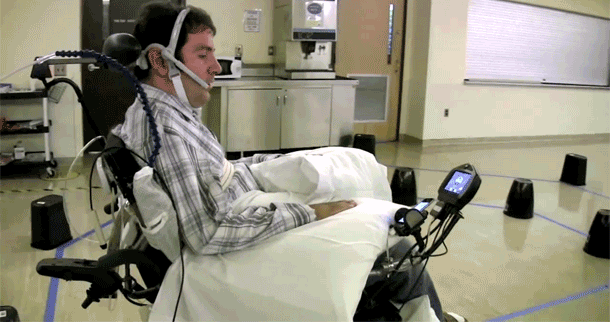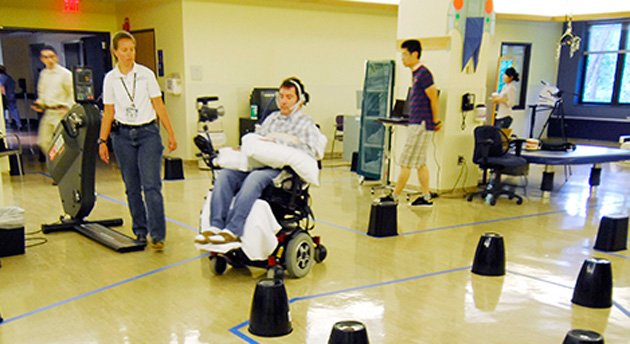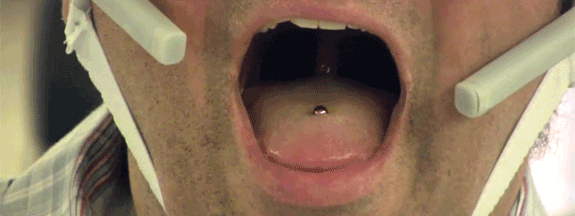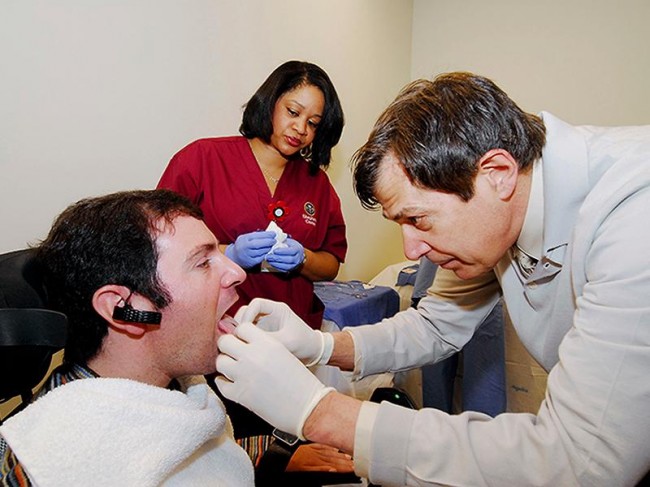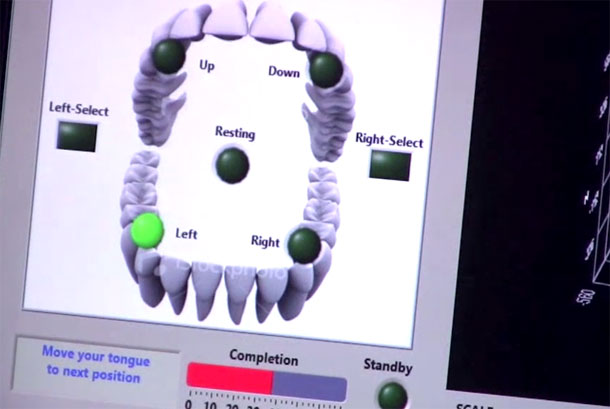How A Simple Tongue Piercing Is Letting These Paralysed Patients Drive Wheelchairs
An experimental device is letting paralyzed people drive wheelchairs simply by flicking their tongue in the right direction.
Tongue piercings can be more than just a statement; they can also help those who have lost the use of their arms and legs. Here's how.
A new experimental device is being tested by paralyzed wheelchair users to move around and control other equipment. The magnetic piercing acts like a miniature joystick and could eventually give disabled people with restricted movements much more independence.
Key to this wireless system: Users get their tongue pierced with a magnetic stud that resembles jewelry and acts like a joystick, in hopes of offering them more mobility and independence.
Research teams from Atlanta and Chicago coordinated by staff at the Georgia Institute of Technology have developed the Tongue Drive System, which uses wireless technology to pass communications between the stud piercing and other devices such as a wheelchair or a computer.
Subjects involved in the trial were either able-bodied or people with tetraplegia
"By the end of the trials, everybody preferred the Tongue Drive System over their current assistive technology," said Joy Bruce, manager of Shepherd Center's Spinal Cord Injury Lab and co-author of the study, according to Science Codex.
"It allows them to engage their environment in a way that is otherwise not possible for them."
Researchers reported Wednesday that 11 people paralyzed from the neck down rapidly learned to use the tongue device to pilot their wheelchairs through an obstacle course full of twists and turns, and to operate a computer, too.
39-year-old Jason DiSanto who was among the first spinal cord-injured patients to get his tongue pierced for science and try out the system said:
"It's really powerful because it's so intuitive. The first time I did it, people thought I was driving for, like, years."
Subjects involved in the trial were either able-bodied or people with tetraplegia. (Photo : Wikimedia Commons)
Image via scienceworldreport.comBy moving the tongue from side to side, a user can control a wheelchair or digital device
The team of researchers in Atlanta and Chicago put the Tongue Drive System to the test against one of the most widely used assistive technologies, called sip-and-puff, that users operate by breathing into a straw.
Using the tongue, patients operated their wheelchairs a bit faster but just as accurately -- and on average, they performed about three times better on video game-like computer tests, said lead researcher Maysam Ghovanloo, director of Georgia Tech University's bionics lab.
washingtonpost.comThe research is an early step that allowed use of the device only inside laboratories
Larger studies in real-world conditions are required before the device ever could be sold. And the tongue piercing may be a turn-off for some potential users, the researchers acknowledge.
But the work is attracting attention from specialists who say there's a big need for more assistive technologies so they can customize care for the severely disabled.
Tongue piercings can be more than just a statement; they can also help those who have lost the use of their arms and legs.
Image via digitaltrends.com"For people who have very limited ability to control a power Relevant Products/Services wheelchair, there aren't that many options," said Dr. Brad Dicianno, a rehabilitation specialist at the University of Pittsburgh Medical Center who wasn't involved with the new research. "There is some interesting promise for this tongue control."
Here's how the actually system works:
A headset detects the tongue's position when the user flicks that magnetic stud. Touch a spot on the right bottom tooth to go right, for example.
The headset wirelessly beams that information to a smartphone the user carries. An app then sends the command to move the wheelchair or the computer cursor.
Why the tongue? "It's unobstrusive, easy to use and flexible," said Ghovanloo, a biomedical engineer who created the system and has started a company that is working with Georgia Tech to commercialize it.
Most people with spinal cord injuries -- or neurologic diseases that also can paralyze -- still can move the tongue. It doesn't require special concentration. The tongue is pretty tireless.
washingtonpost.com